Kodak Portra 800 is quite possibly my favourite colour negative film. I say that as someone who’s just committed to shooting only P3200 and Ektachrome E100 for at least 6 months in a bid to learn these two returned-to-market films from Kodak properly. But when making that decision, the first concern I had was how I was going to cope without my quite-recently found love for this fast and very versatile colour emulsion.
Now, before I get into this, I think that it’s important to caveat this review by saying that it is far from exhaustive, or even conclusive. I’ve shot a number of rolls of Portra 800, but they have all been 35mm, all processed the same way by AG Photo Lab, then scanned with my Noritsu LS1100 and post-processed in Lightroom by me, to my eye. I choose the labs I use for their consistent results, I use my scanner in a specific way and apply fairly subtle process to my scans in Lightroom all to achieve results that I am happy with without too much fuss. I talk more about my colour film workflow here, but I mention this now to highlight the point that there are a lot of variables within the process of shooting film, so really all you’re about to read amounts to is a review based on how I personally shoot and have processed this film. In short, your mileage may vary, but I hope that this at least gives a rough idea of the sort of results you can expect to achieve.
With that acknowledged, the first thing I want to point out is that within my specific workflow I am yet to have a roll that has caused me any real issues at all. In fact, for one reason or another, Portra 800 is the colour film that seems to have best responded to how I work, and has given me the most confidence that I will get results that I like over the widest range of shooting conditions.
I mentioned in a recent review of my now treasured Konica Hexar RF that I’d had a bit of an epiphany when I loaded a roll of Portra 800 into that camera and mounted my Voigtlander 50mm f/1.2 onto it. The point of mentioning it in that review was more specifically to highlight how versatile the lens had felt on that camera, but adding Portra 800 into the mix really was the final piece of the puzzle for me.
Prior to shooting Portra 800, my biggest concern or sense of limitation with regard to this film was its higher speed. As an 800 ISO film, I suppose I had pigeon-holed it as a low-light film. I’m not really sure what made me decide to load a roll of it and shoot it in daylight originally, but I’m really glad I did. Any concerns I might have had about grain went straight out of the window when looking at the first results. I think I probably expected it to have a much coarser more visible grain structure, and that I’d find myself in situations where I’d regretted not using a slower film for the sake of less visible grain.
In reality, I can’t think of a single image I’ve taken with this film that I’ve even negatively contemplated the grain in the final image. And because I’m not a massive bokeh-fiend, and don’t find myself with a desire to shoot much in the way of shallow depth of field photos in daylight, but do enjoy the versatility of being able to shoot colour film in low light, this pretty much makes it the ideal choice for me. That said, as I’ve alluded, with a 50mm f/1.2 lens mounted to a camera with a maximum shutter speed of 1/4000th of a second, I pretty much feel like I can shoot what, where and however I like.
The results
Because of this versatility, I’ve shot Kodak Portra 800 in a fairly wide range of shooting circumstances. I’ve also over and underexposed it a little bit, just to see how well it would respond. So rather than harp on too much more about the film generally, I thought I’d show some specific examples with a few thoughts around them.
My first roll
The first few images are from my first roll with Portra 800. I shot it in a Nikon F75 with a fairly basic zoom lens. I can’t remember exactly, but I suspect I might have decided to load a faster film to counteract the effect or also using a slower lens in the winter months. The 28-70 lens was a little lower-contrast and not quite as high resolution as a lot of the lenses I normally shoot. I also found the results out of the Noritsu to be quite impacted by the slight yellowish-orange cast this scanner is quite well known for.
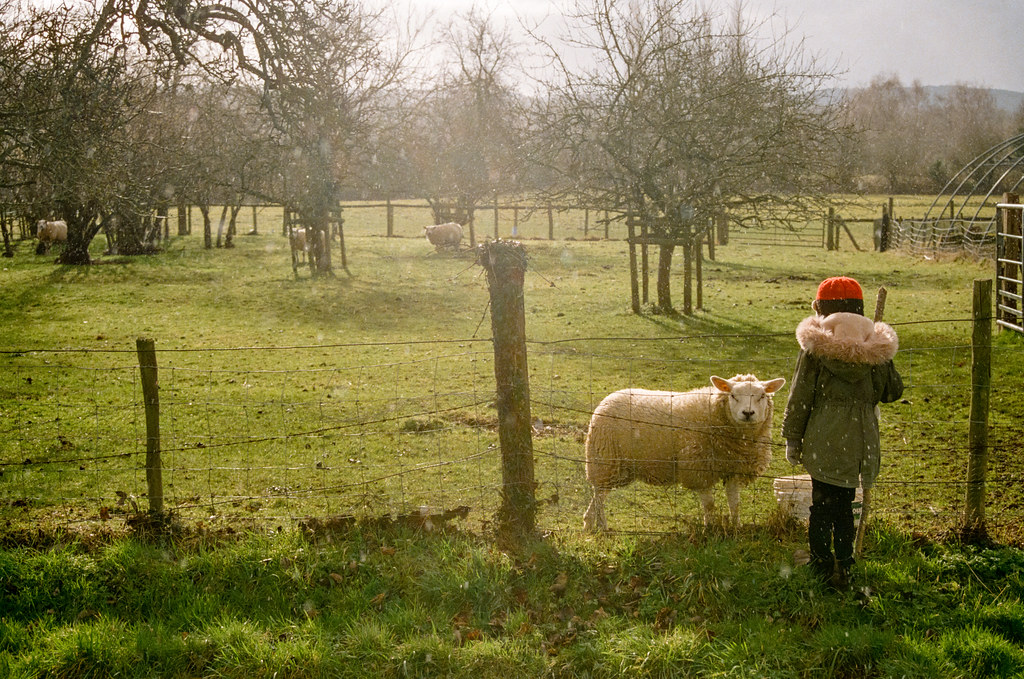
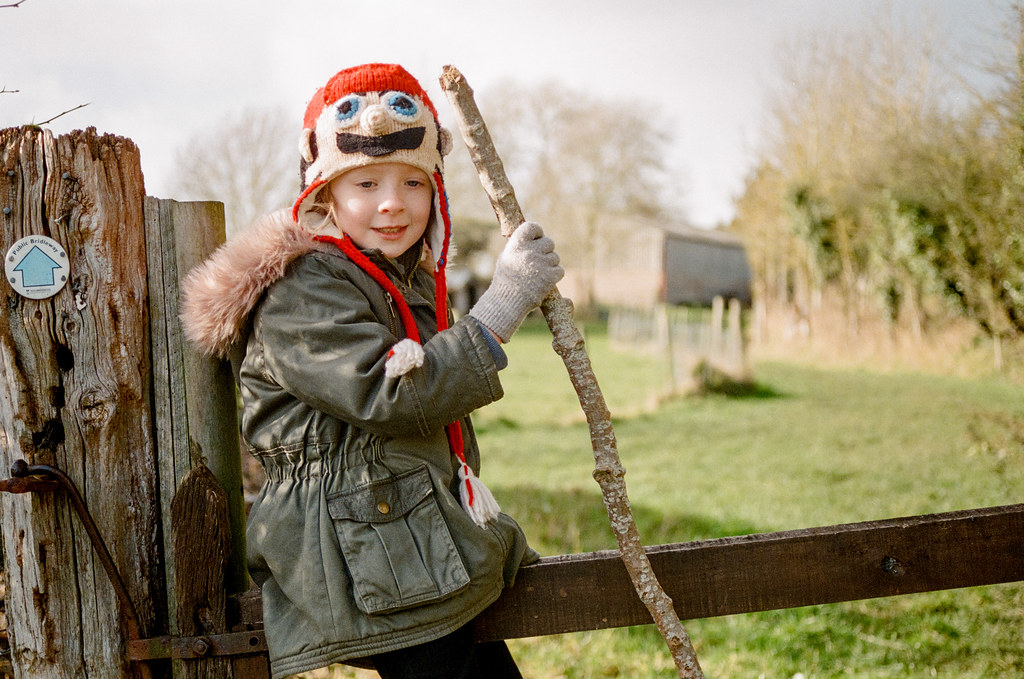
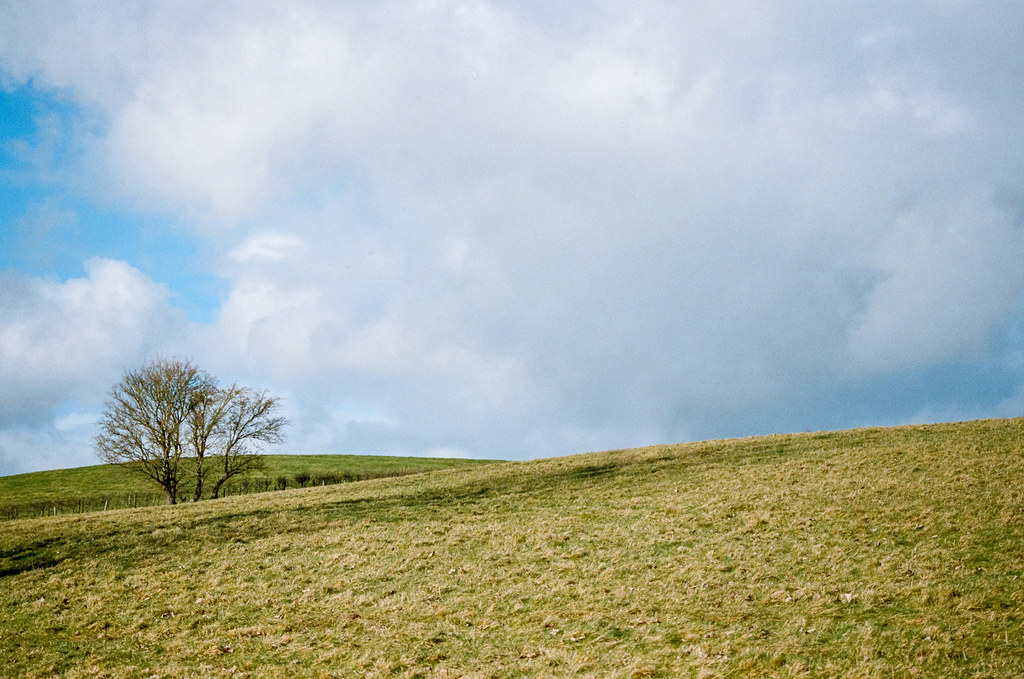
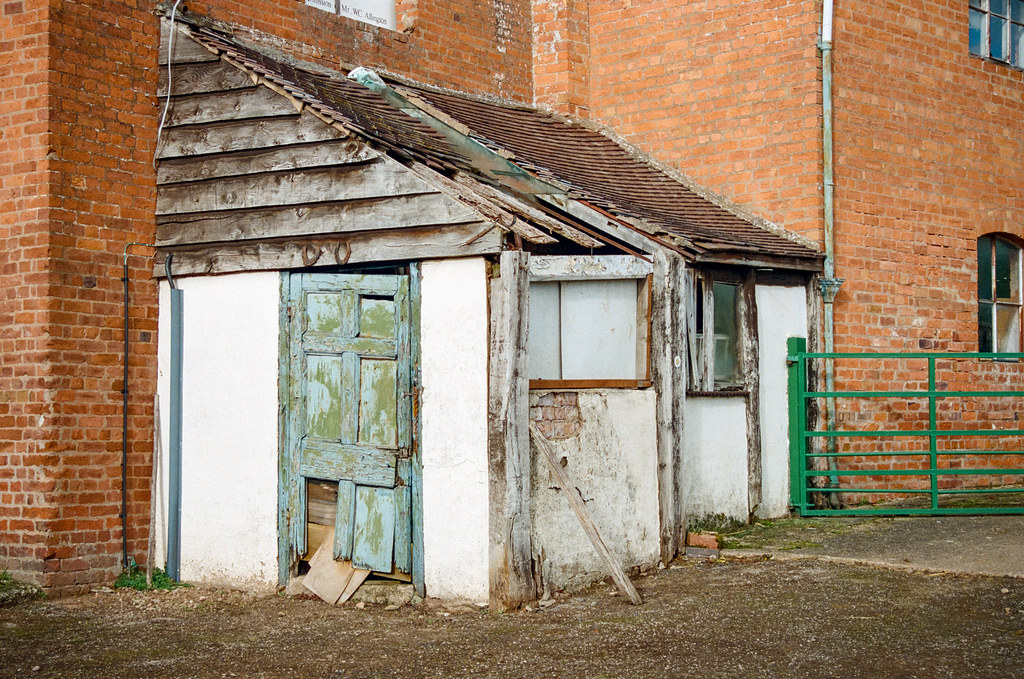
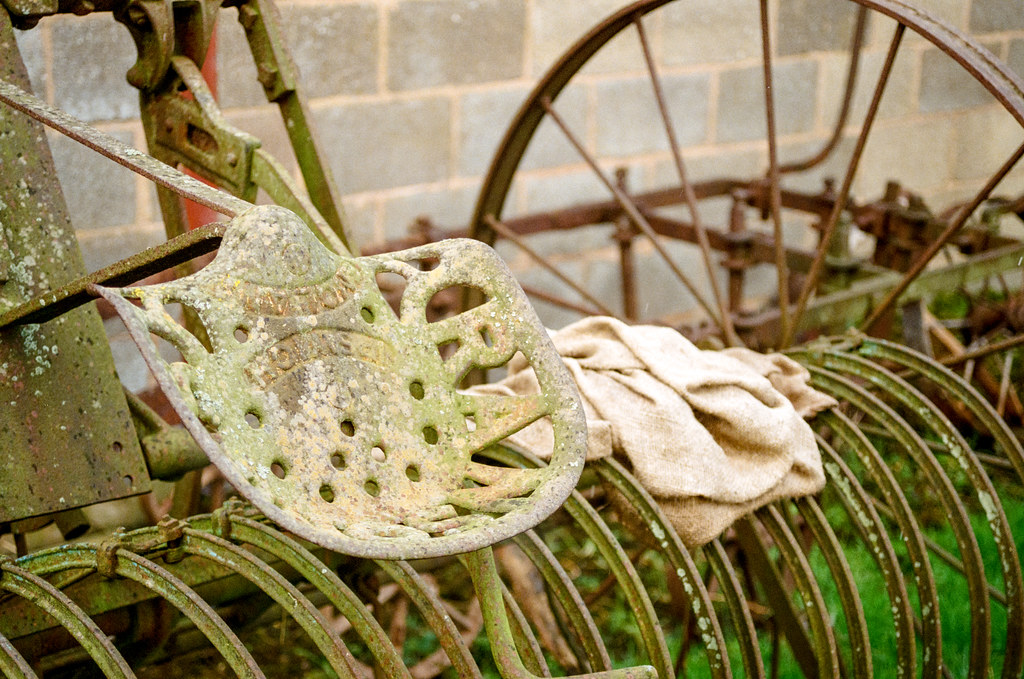
At the time, I hadn’t quite found my feet with post-processing this cast out, but I was more than happy with the results at the time. Specifically, as I’ve already mentioned, I found myself particularly impressed with the level of grain, and that despite the lower resolution and contrast of the lens, I could also see that the film was pretty “sharp” too. Though, I must admit, I did put this down to having shot the roll with a camera with an evaluative meter that would have no doubt kept the exposure in check.
One year later
Back when I shot this first roll, I was still fairly affixed to only shooting Portra 400. I was still getting the hang of my Noritsu scanner and so hadn’t felt entirely comfortable deviating from my usual choice of film. As such, I then subsequently didn’t shoot Portra 800 for nearly a year. By the time I picked up a roll in January this year, it was again because I was shooting a slower-lens in the winter months. This time, I was shooting with a Leitz 50mm f/3.5 Elmar and my Leica Standard.
These were all metered either Sunny-16, or on a couple of occasions with the help of my iPhone as a light meter. As a result of this, I can be fairly confident in saying that the exposure wouldn’t have been nearly as consistent as my first roll. Despite this, and because by this time my scanning and post-process skills had improved, I still got some really nice scans.
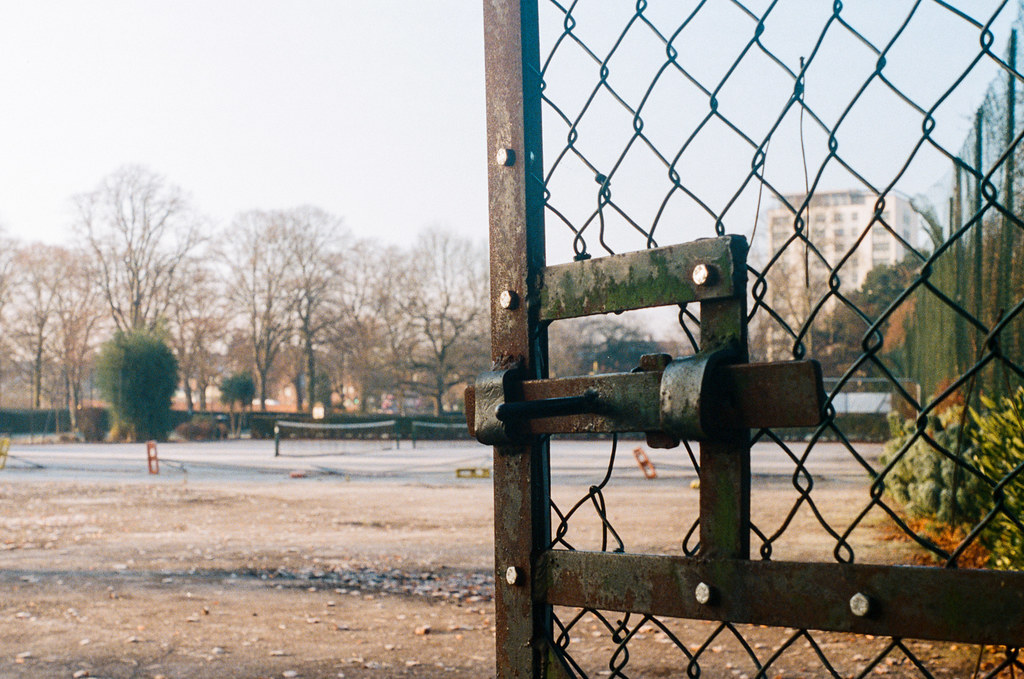
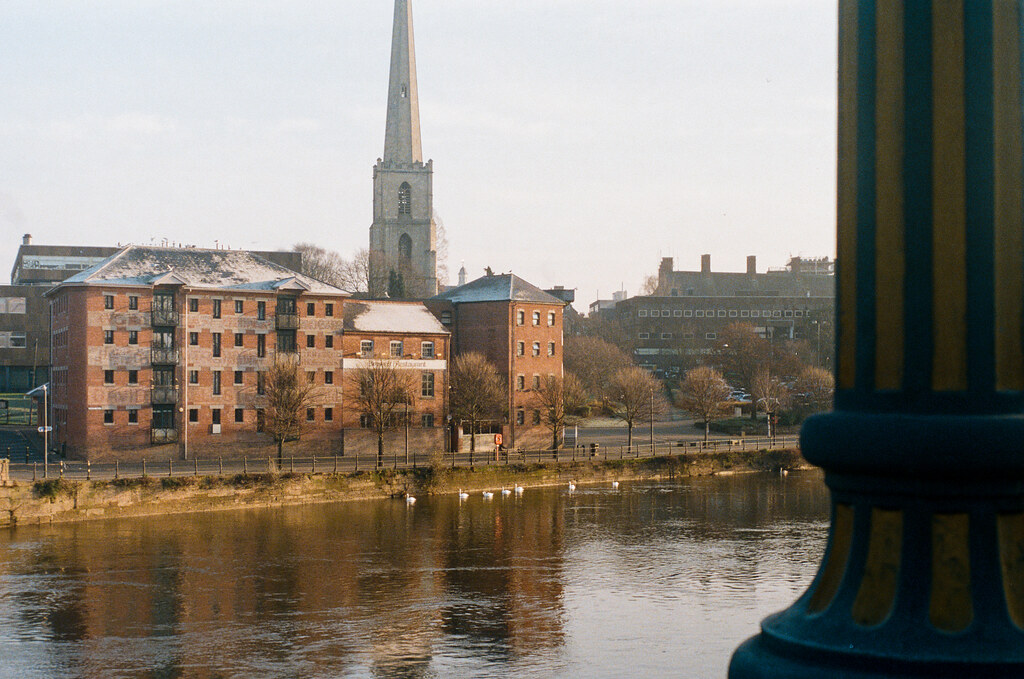
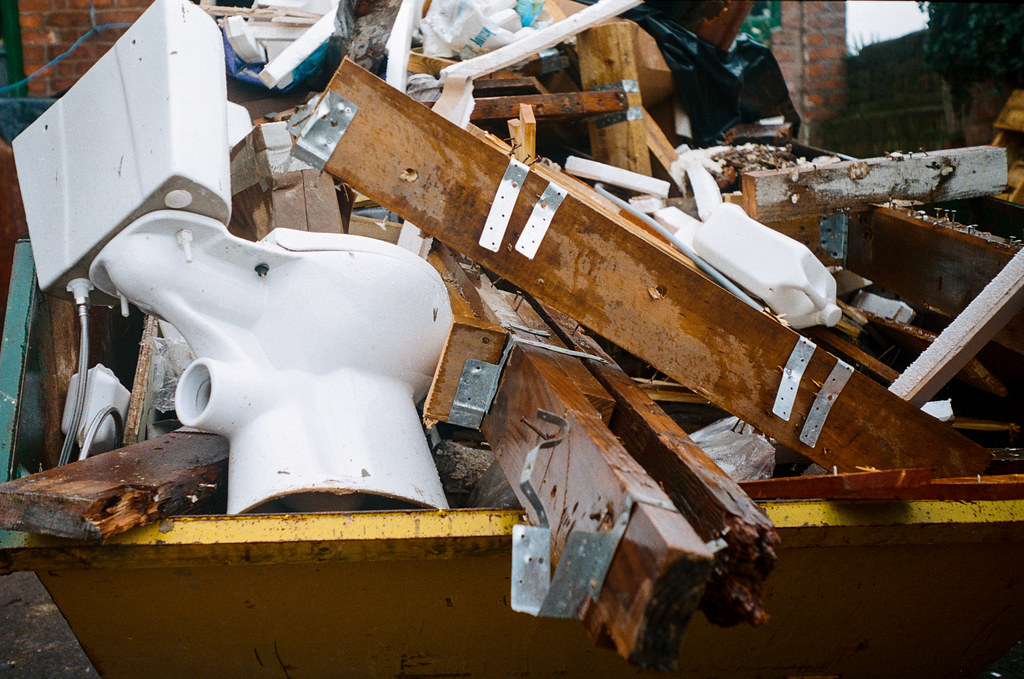
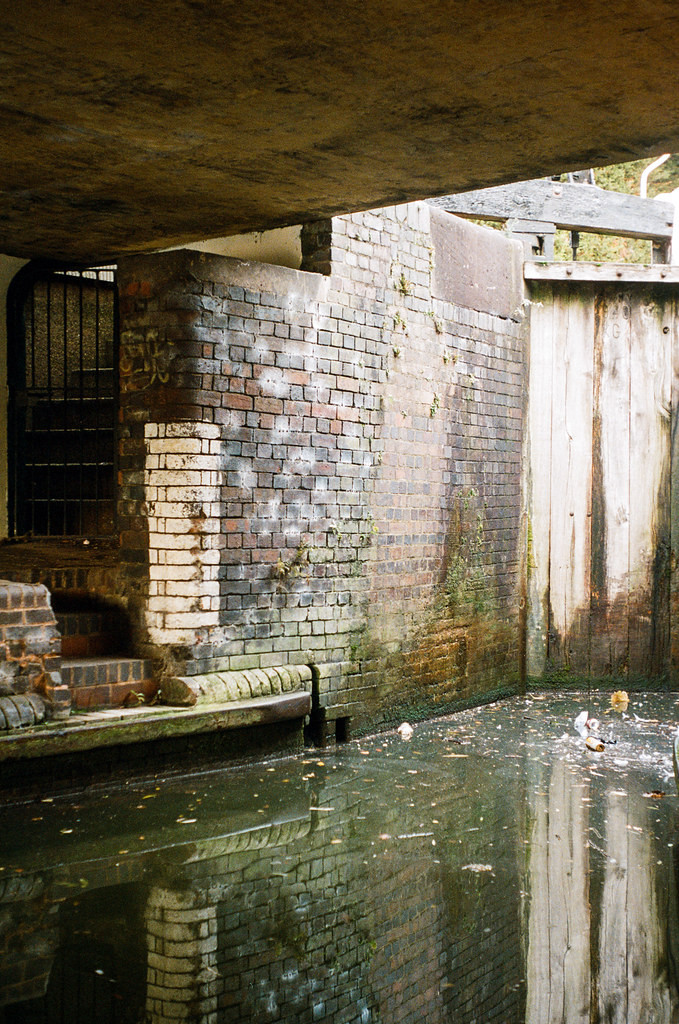
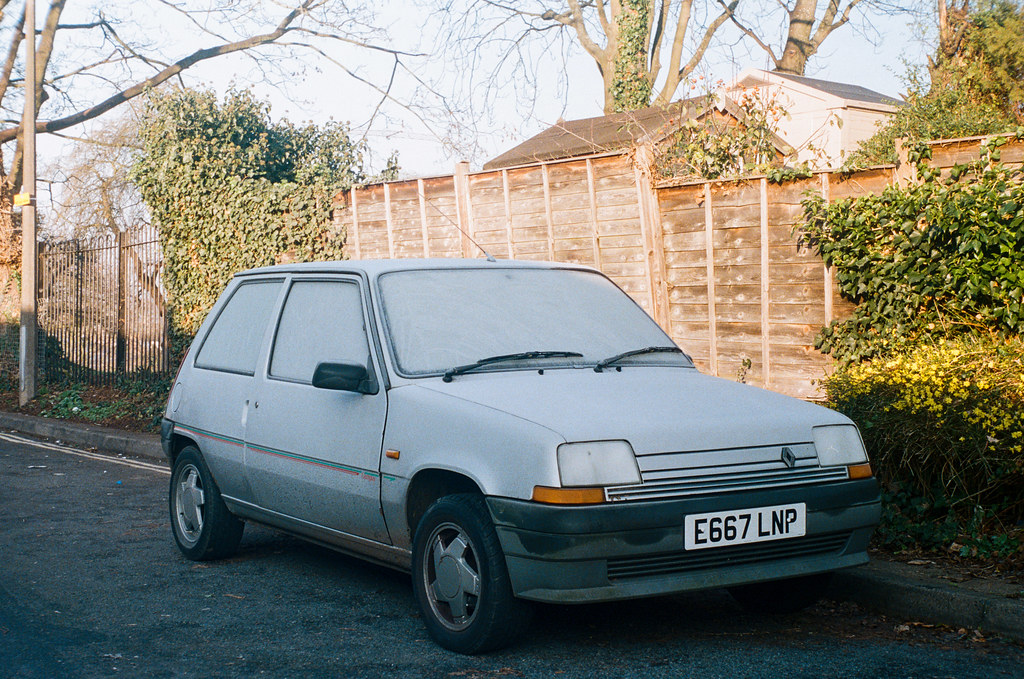
Importantly, at least as far as my workflow goes, I didn’t find myself needing to correct colour-shifts much between frames, which to me was a good sign that Portra 800 could hold up to at least a bit of variance in exposure within my workflow without it causing me a headache in the scan and in post. This is something I really like about Portra 400, but for one reason or another, I didn’t expect I’d get the same consistency from Porta 800, which is an older emulsion.
Actually, now I’d got to grips with my scanning processes, what really interested me when I scanned this roll is that I found it much easier to get the more saturated colours I like. As a rule, I find that prefer the colours out of consumer films such as Ultramax 400, but I don’t really get on with the higher grain and reduced sense of sharpness I’ve had out of those sorts of films when I’ve shot them in the past.
To get the more saturated colours from Portra 400, I’ve always found I need to overexpose it a bit or that I need to push the colour more in post. Both of these options can be a little problematic. Proimage 100 is another film that’s given me the more saturated colours I like, but as a 100 speed film, I just didn’t find it to be as versatile as I’d have liked.
I’m not sure why, but I expected Portra 800 to be lower saturation than Porta 400, but that didn’t seem to be the case at all. Scanning this roll, the colours seem to pop how I like them really easily, and that was despite the fact that I’d shot it with a 1940’s lens. At this stage, it was quickly dawning on me that Portra 800 could be the film that might offer me the greatest level of versatility and the lowest level of requirement to tinker with the results within my workflow.
Sealing the deal
As such, I then decided to shoot a roll with a very modern, high contrast, high resolution lens. In fact, it was this next roll – the one I mentioned at the beginning of the post with the Konica Hexar and Voigtlander 50mm f/1.2 – that really sealed the deal for this film for me.
The Hexar, of course, has the advantage of a built in light meter that happens to suit me very well. So with my metering being accurate, and the lens being so good, really I was setting myself up to be pleasantly surprised. Actually, I was even more pleased with the results than I expected. With very little work in post – in fact just enough to get rid of the scanner’s tendency to a yellowish-orange cast – I got results that were bang on how I like my colour film images to look. Colour saturation was spot on, minimal grain, stacks of sharpness. I was very impressed indeed.
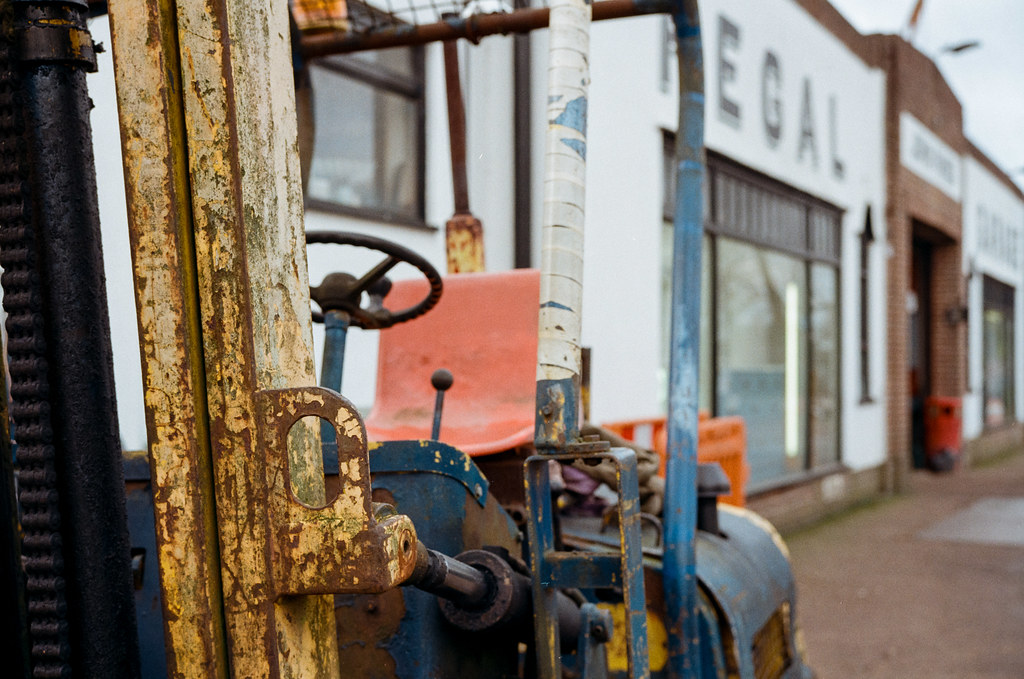
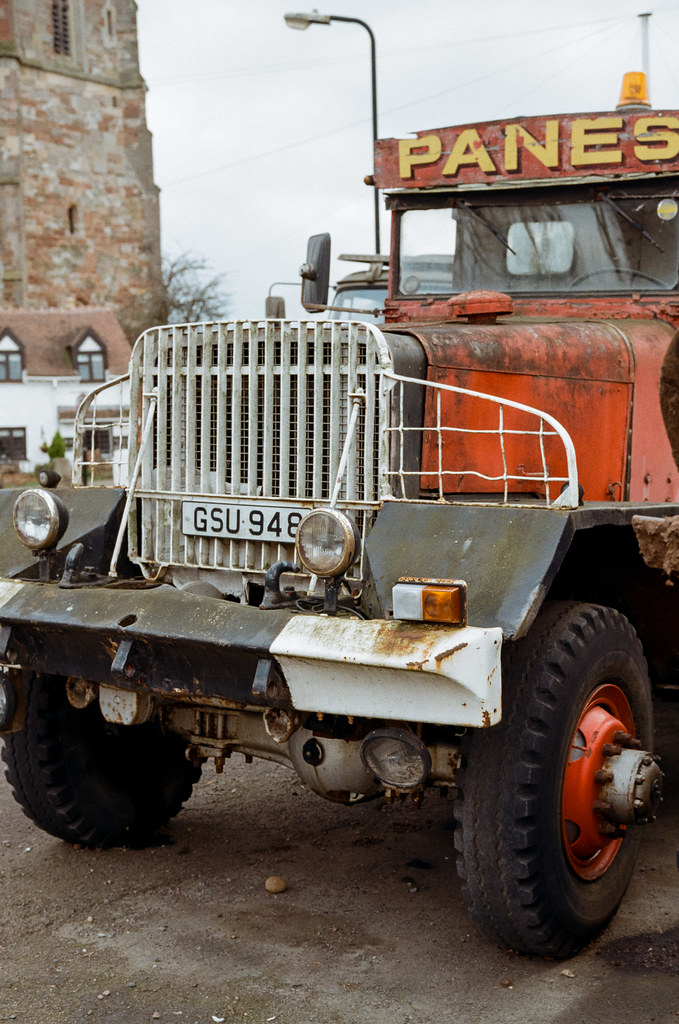
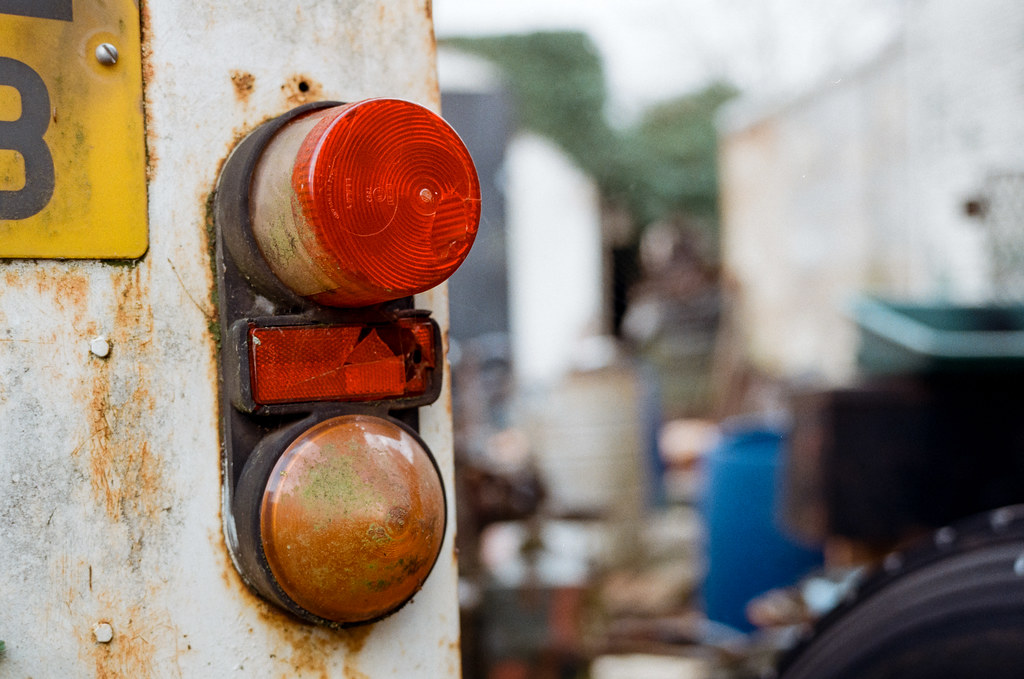
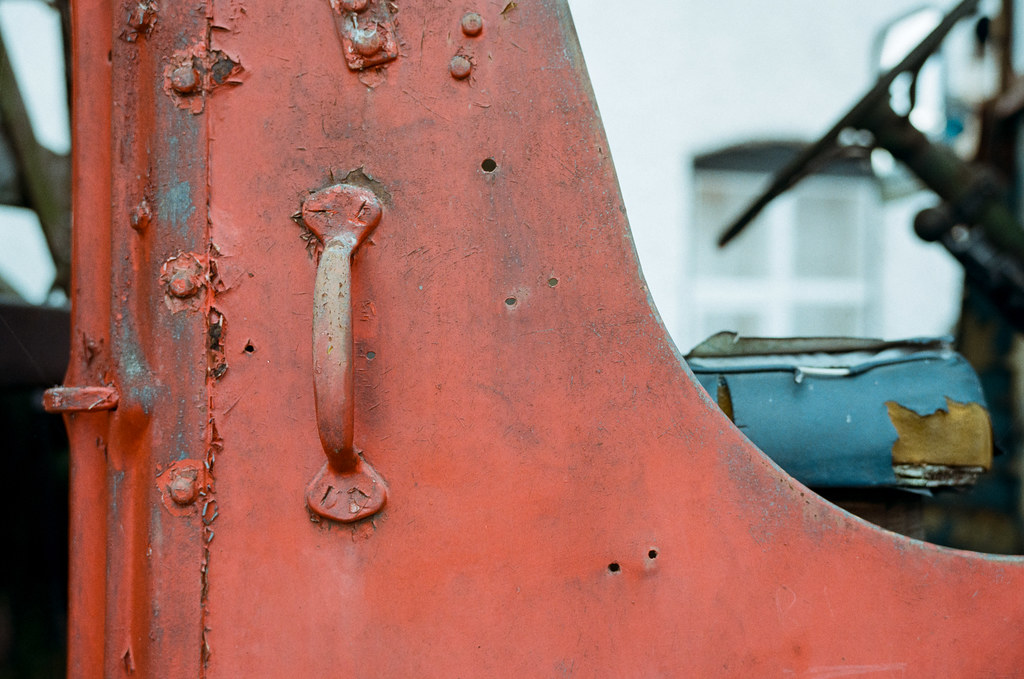
Low light
A couple of rolls later I decided I should give Portra 800 a run for its money in lower light. As an 800 speed film, it seemed only right… again loaded into the Konica Hexar with the 50mm f/1.2 mounted, I took a roll out on a night out. Unfortunately, I did get a little merry, so can’t remember exactly the exposure index at which I shot these, though they were at least 1 if not 2 stops underexposed, and more significantly I didn’t push process the film.
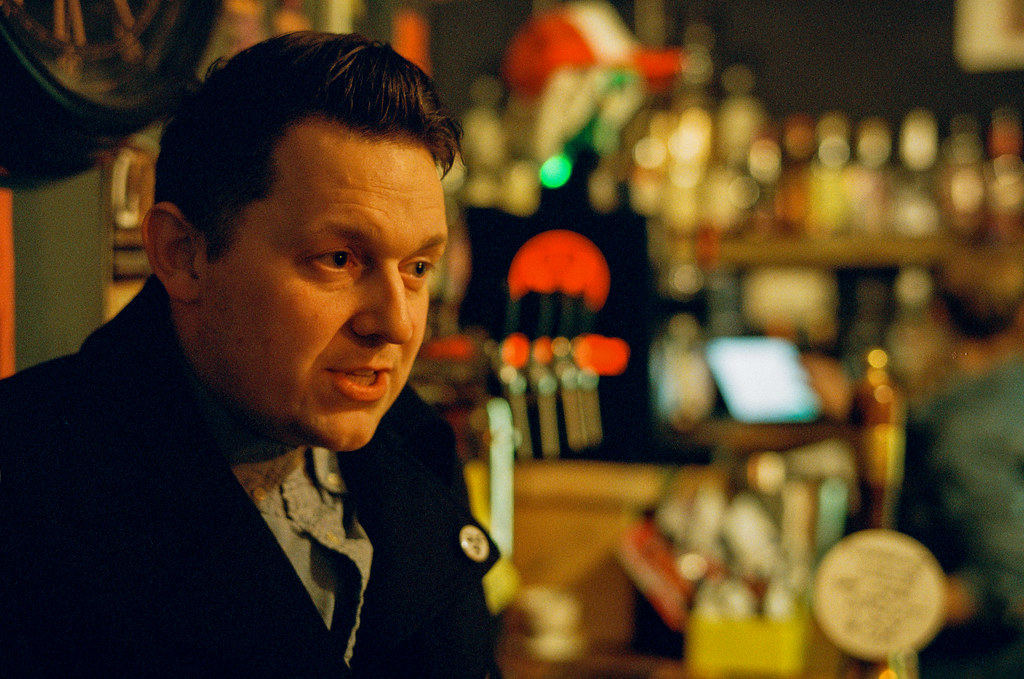
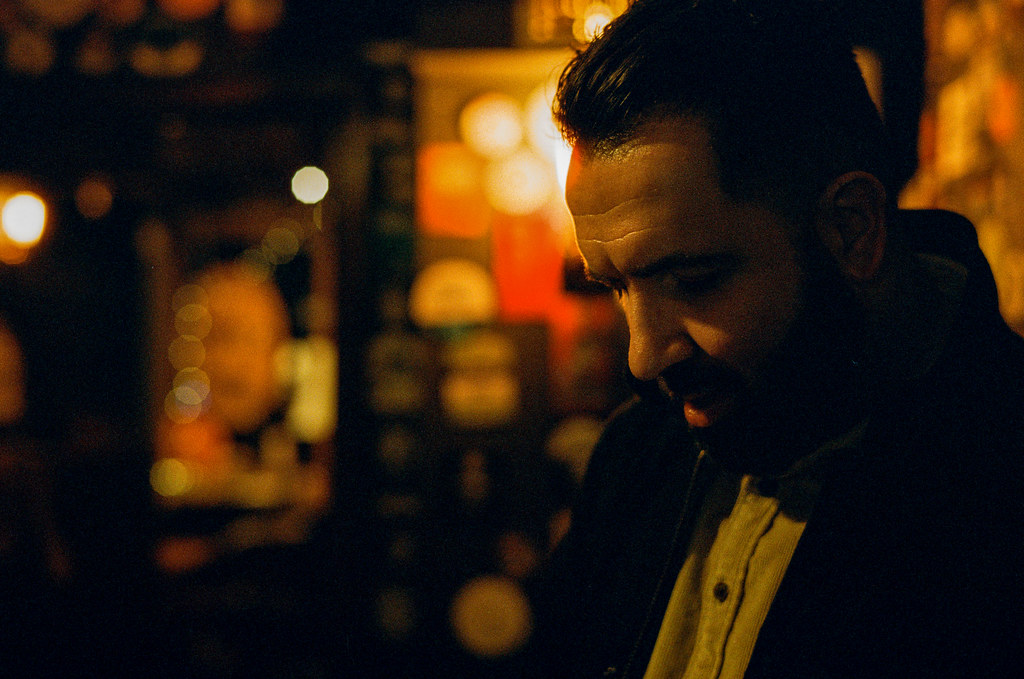
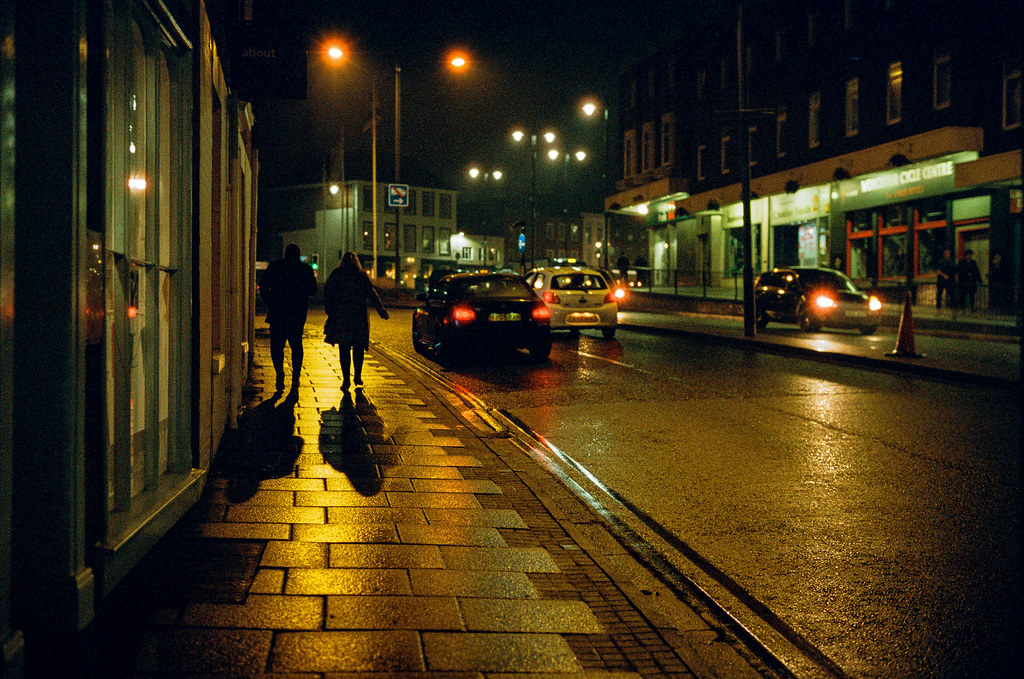
As you can see in this next frame, which I’m going to take a stab in the dark (pun) and say was shot at EI1600, there is every bit of potential for very sharp, low grain images from this film provided a high quality lens is used and its scanned and processed well.
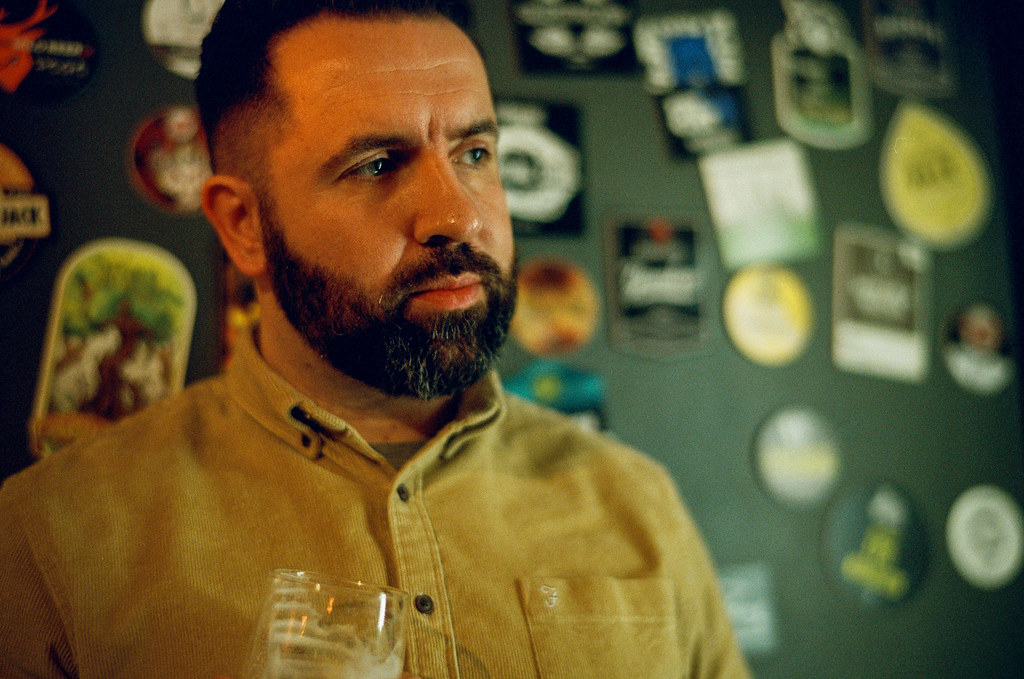
It’s shots like this that make me wonder why some people are so obsessed with pushing film these days. Understanding how to expose in lower-light and how to scan properly can reap much better results in my experience… but anyway, that’s a rant for another day.
Landscaping with Zeiss
With the knowledge that I could get the sort of low-grain, high-sharpness results out of Portra 800 with a good quality lens, I soon decided to pair it with the frankly awesome Zeiss 35mm f/1.4 ZM and some landscape shooting in Wales. I included a bunch of these results in my review of the lens here, but I didn’t go into much depth about just how impressed I’d been with Portra 800. Even knowing what I knew, it felt slightly unnatural using this film for sunny-day landscapes type shots. The results proved conclusively to me that those sorts of feelings were ill-founded.
Combined with high end Zeiss ZM glass, which really provides peak of what I like from lenses in terms of contrast, colour etc, Portra 800 really shines for me. With some careful exposure and scanning, even with very high contrast scenes, I was able to pull stacks of shadow detail with very little detriment to the image quality. In fact, in some of these – just because I could pull so much detail out of the shadows – I probably slightly over-egged the pudding. Though I do think that even if I did, it shows what’s possible with this film in these sorts of shooting circumstances.
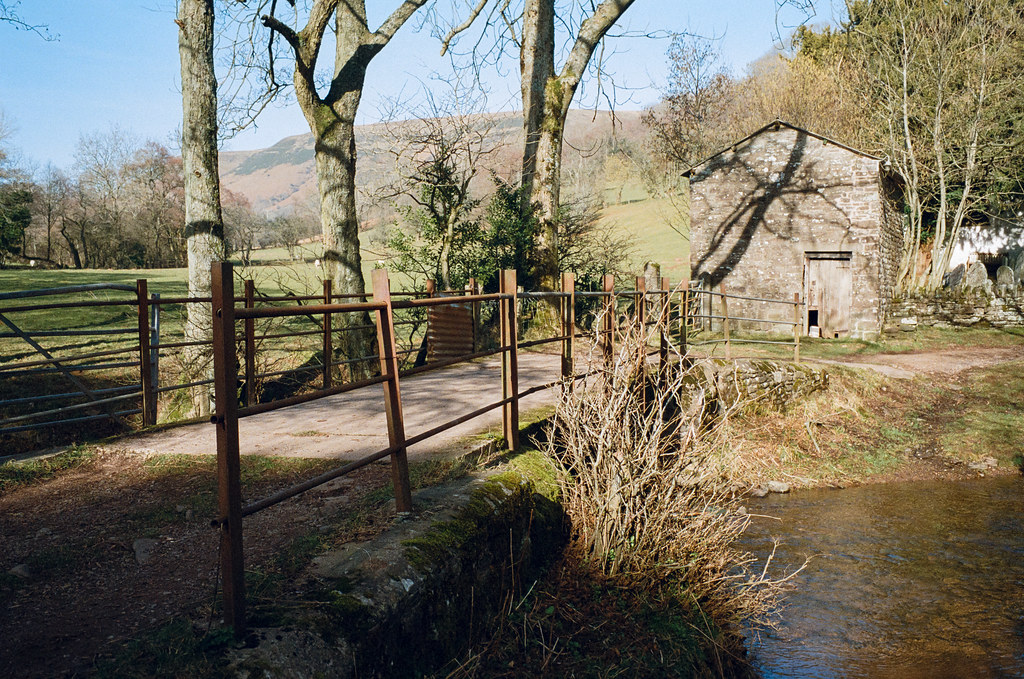
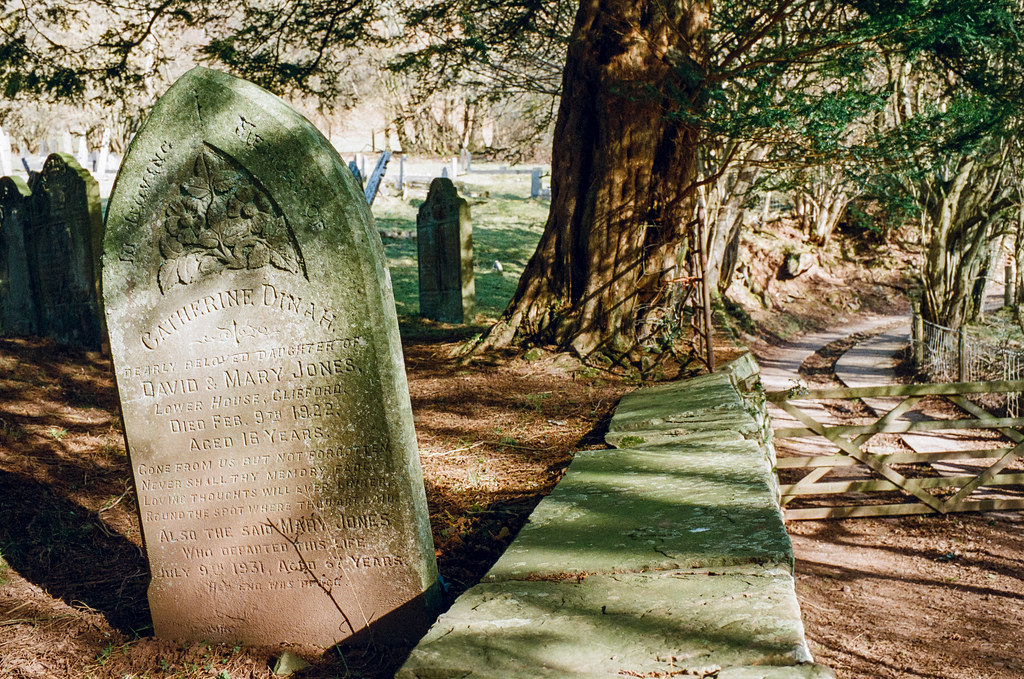
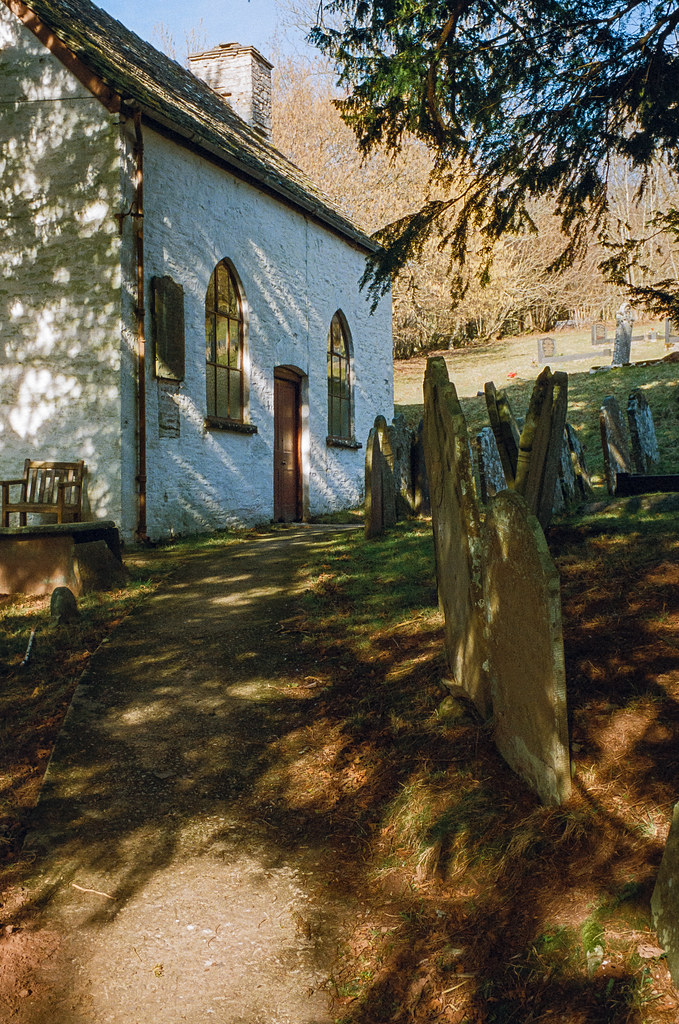
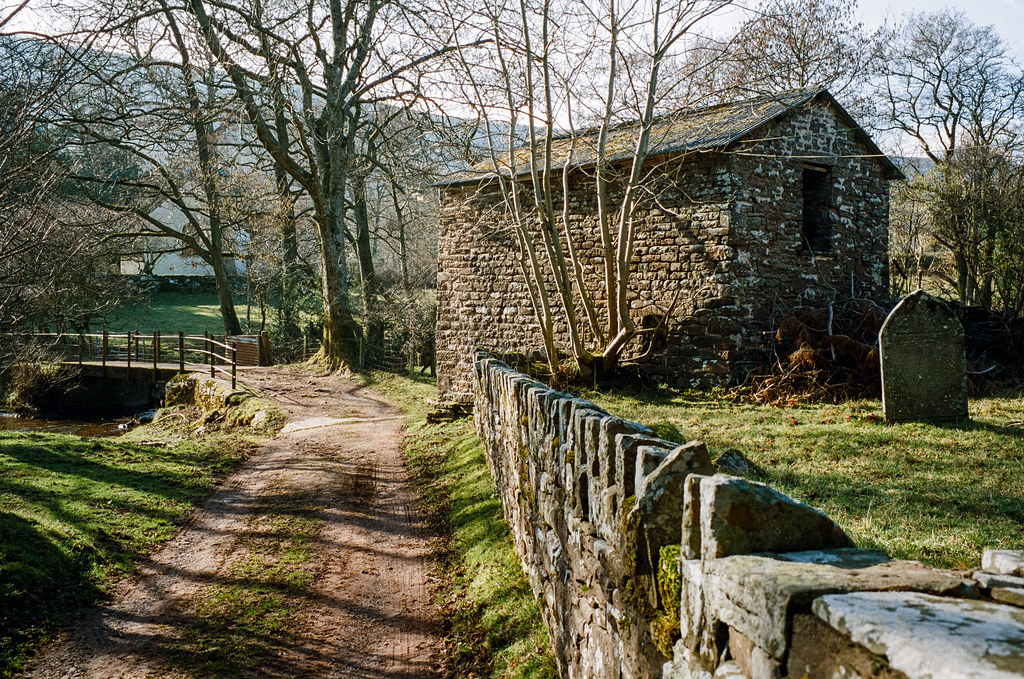
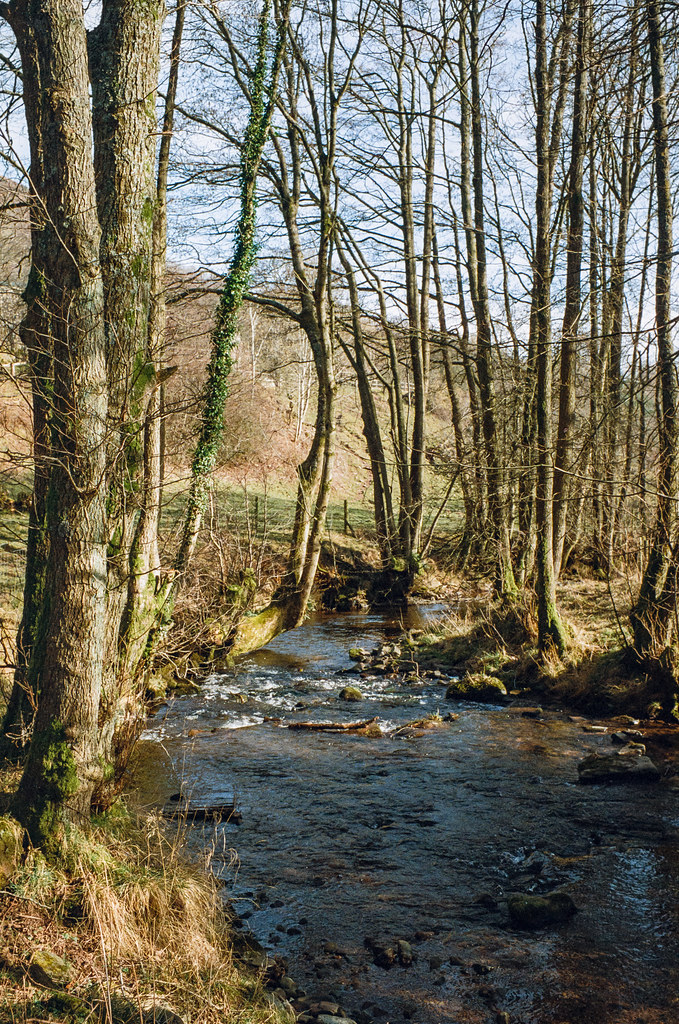
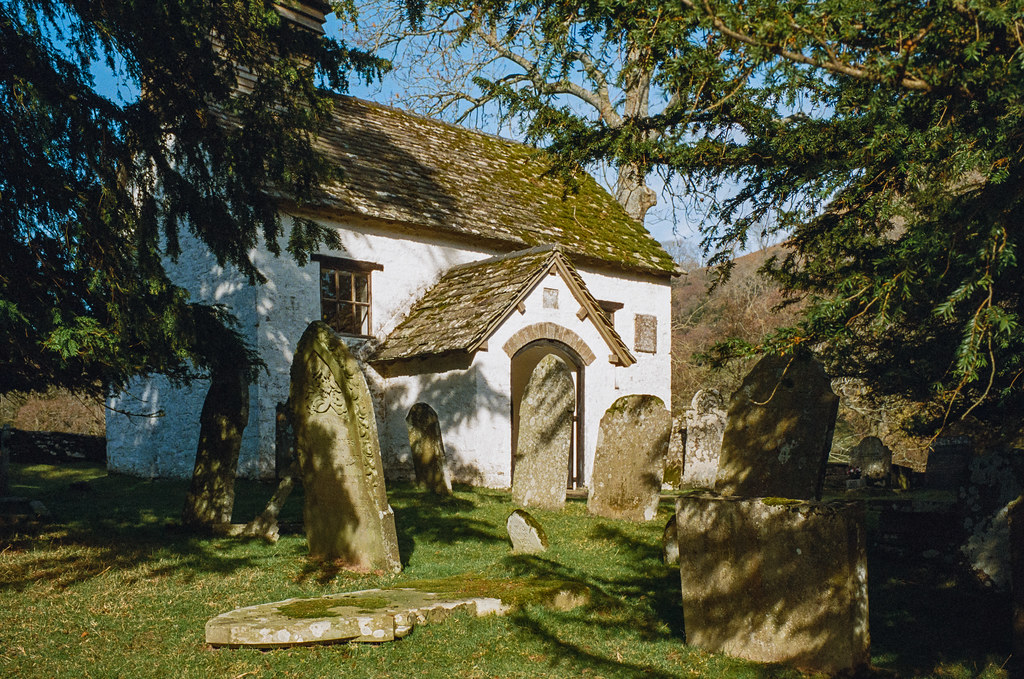
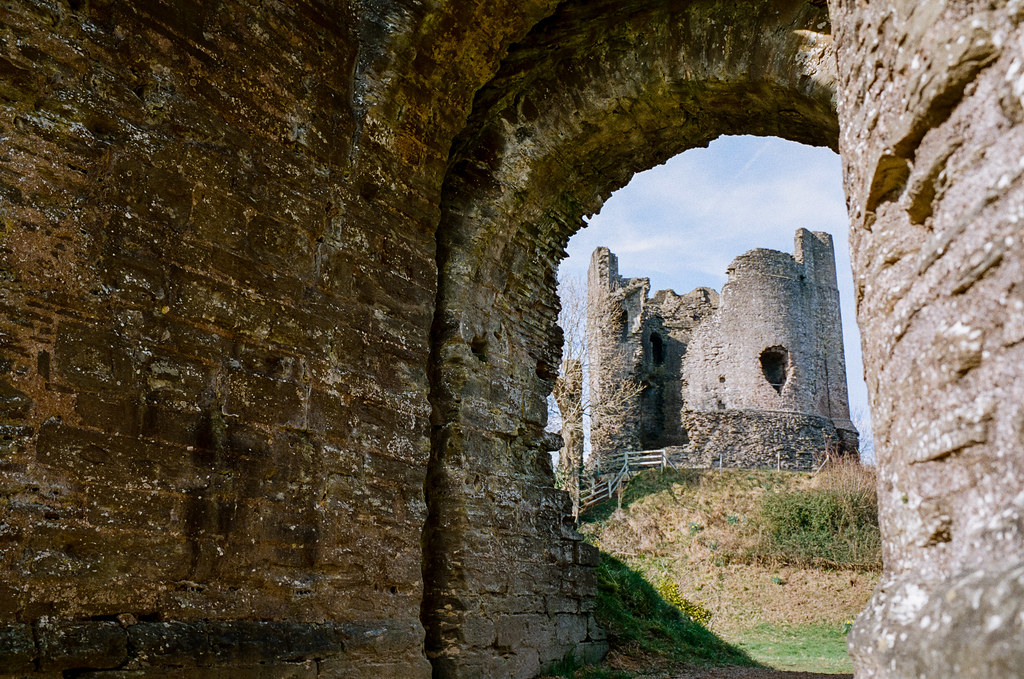
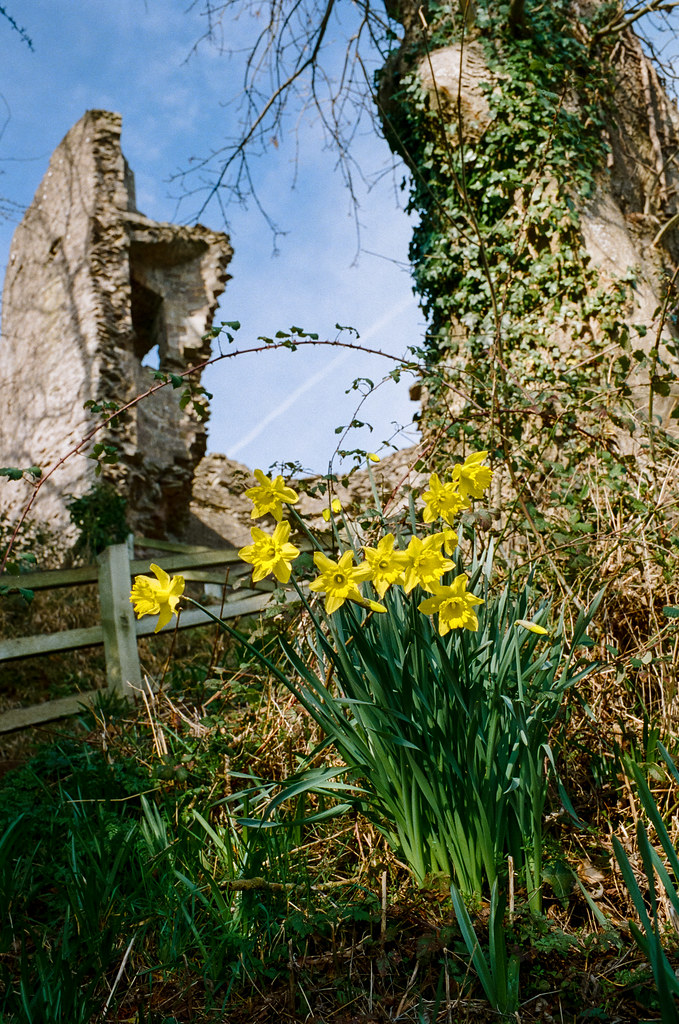
A little bit of overexposure
As a final test, specifically for the sake of this review, I recently shot a roll slightly overexposed to see how well I could correct it. As I’ve written about before on this website, slight overexposure is good way to cheat your way to good results provided the film has the capacity for it. Portra 400 is well known to be a film that allows for significant levels of overexposure and it still be quite correctable. So I wanted to know if Portra 800 was just as flexible. As it turns out it is at least fairly happy with overexposure. These next shots were taken at EI200, and though this seemed to emphasise a yellowish-shift in the scans, it was nothing I couldn’t post-process out with relative ease.
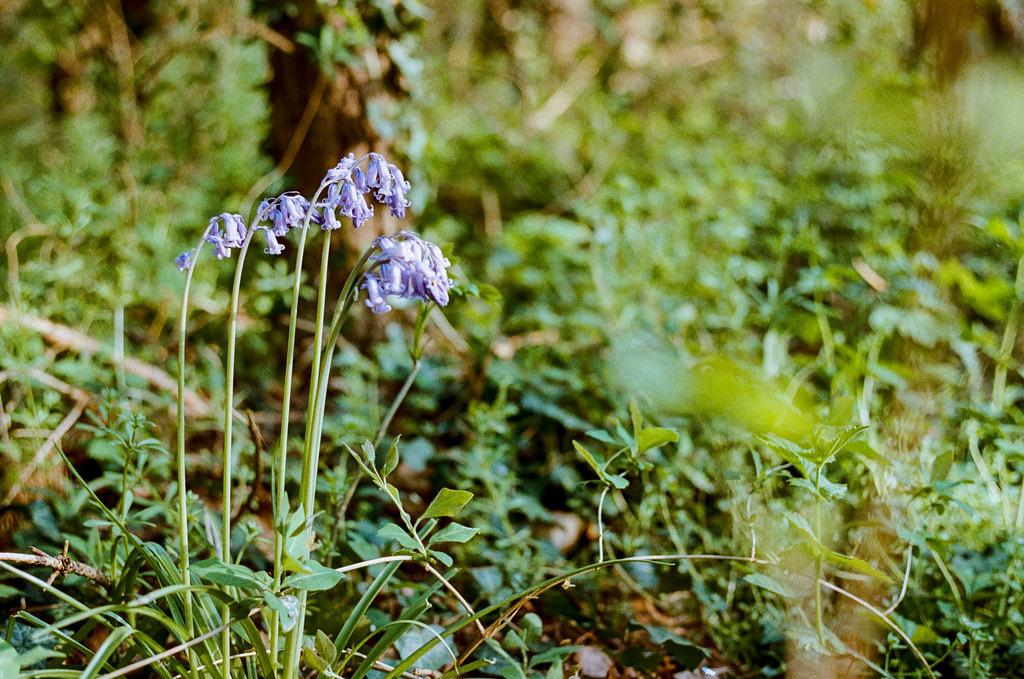
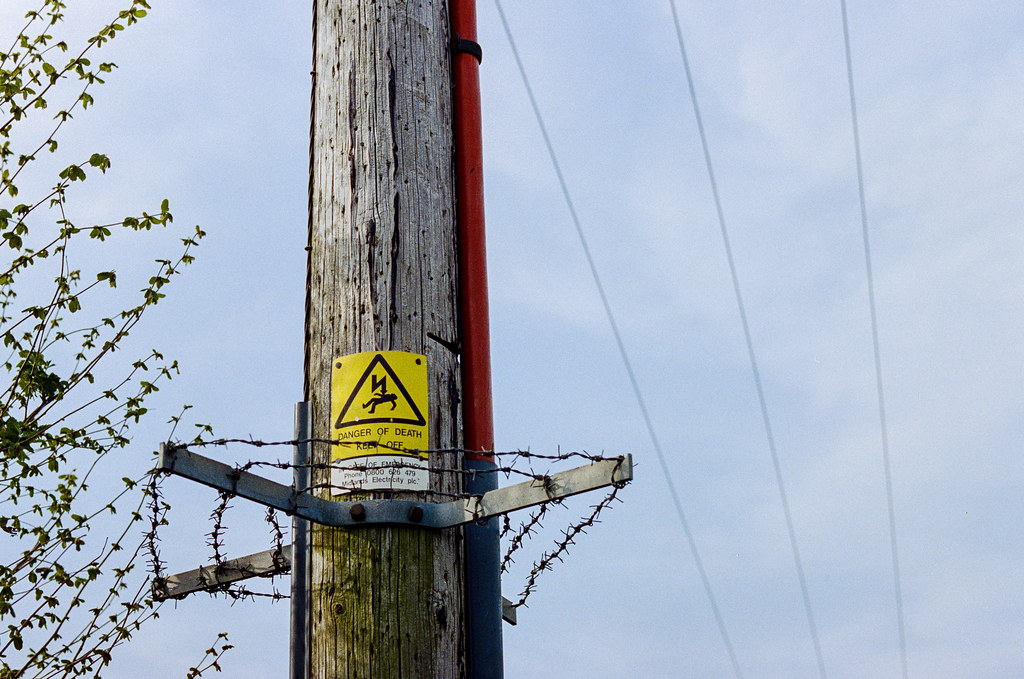
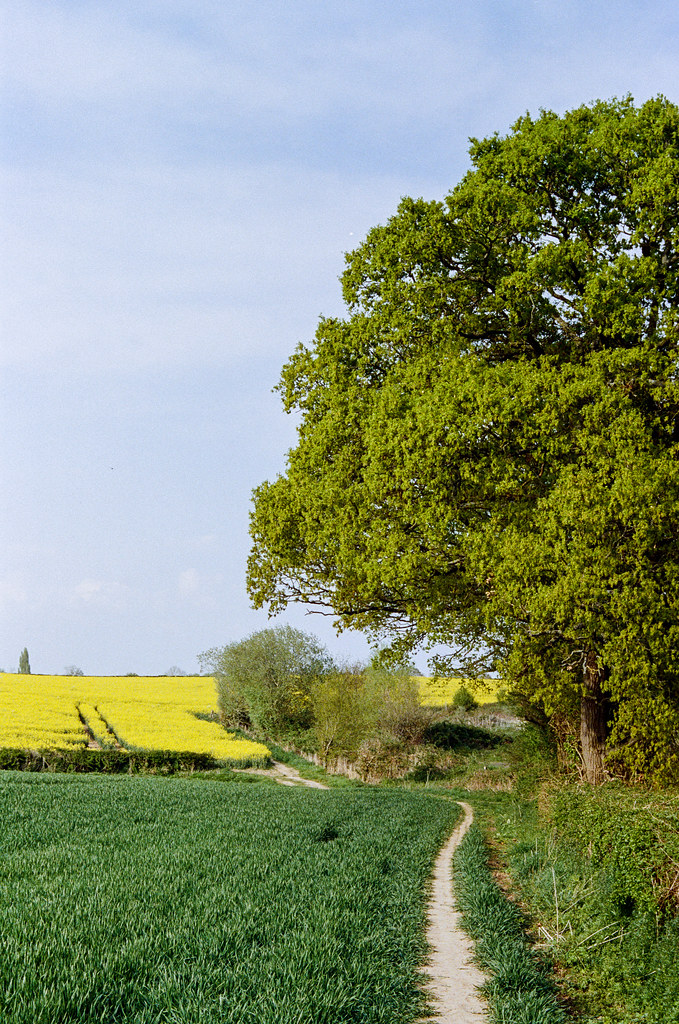
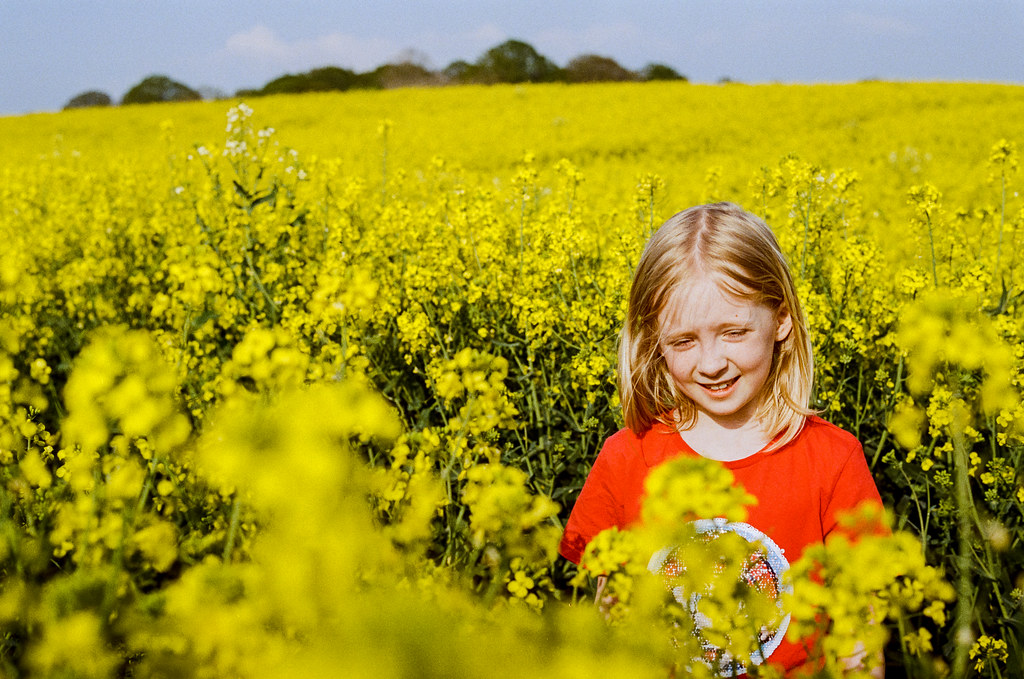
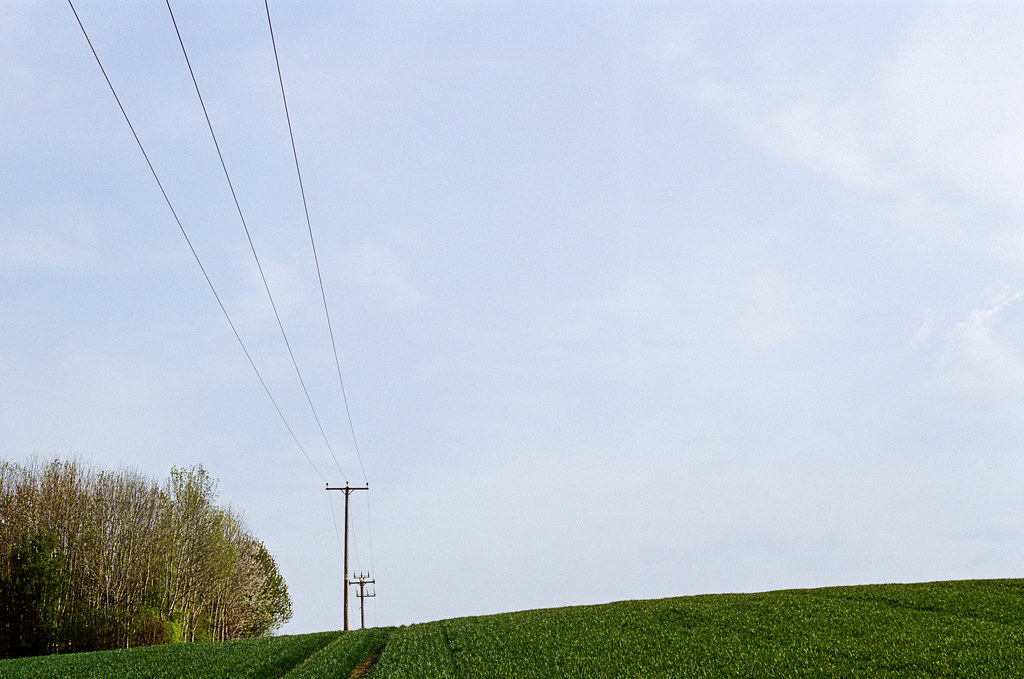
A few more examples
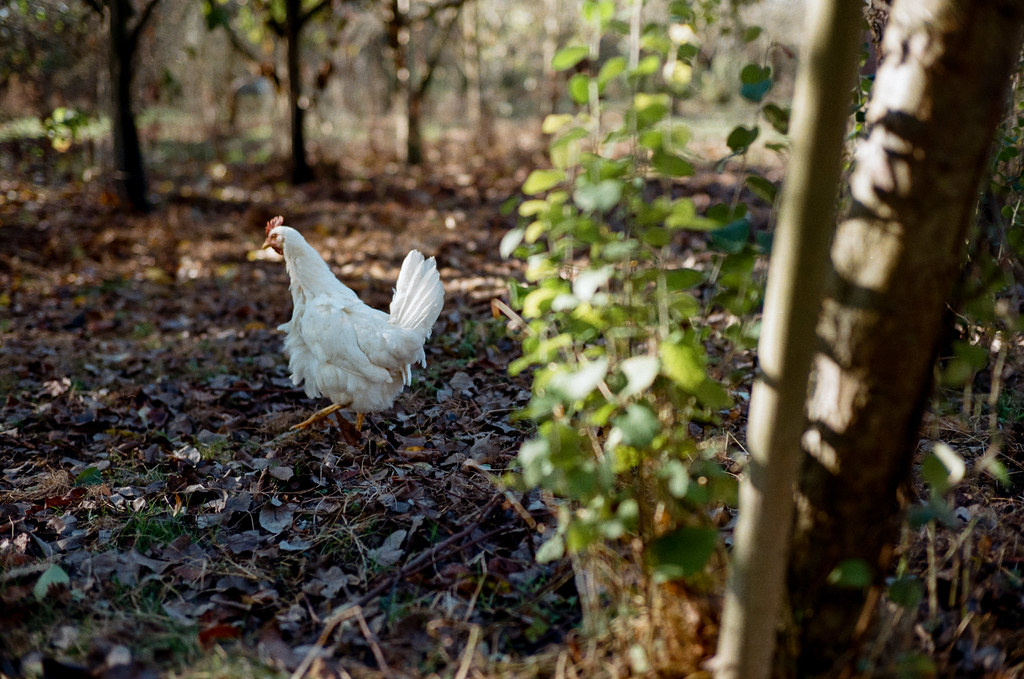

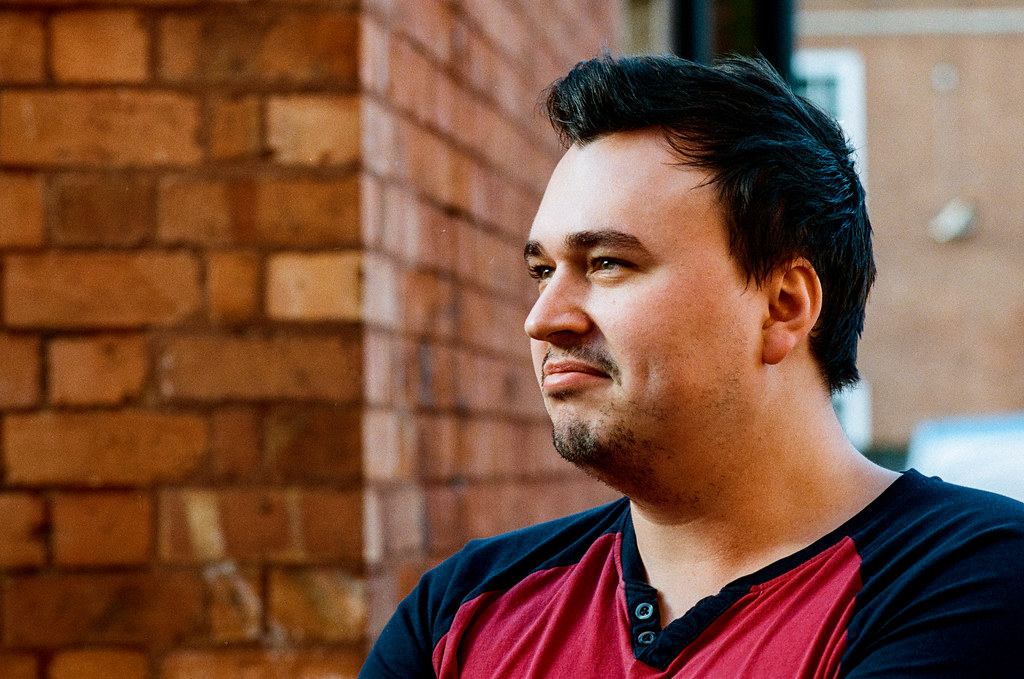

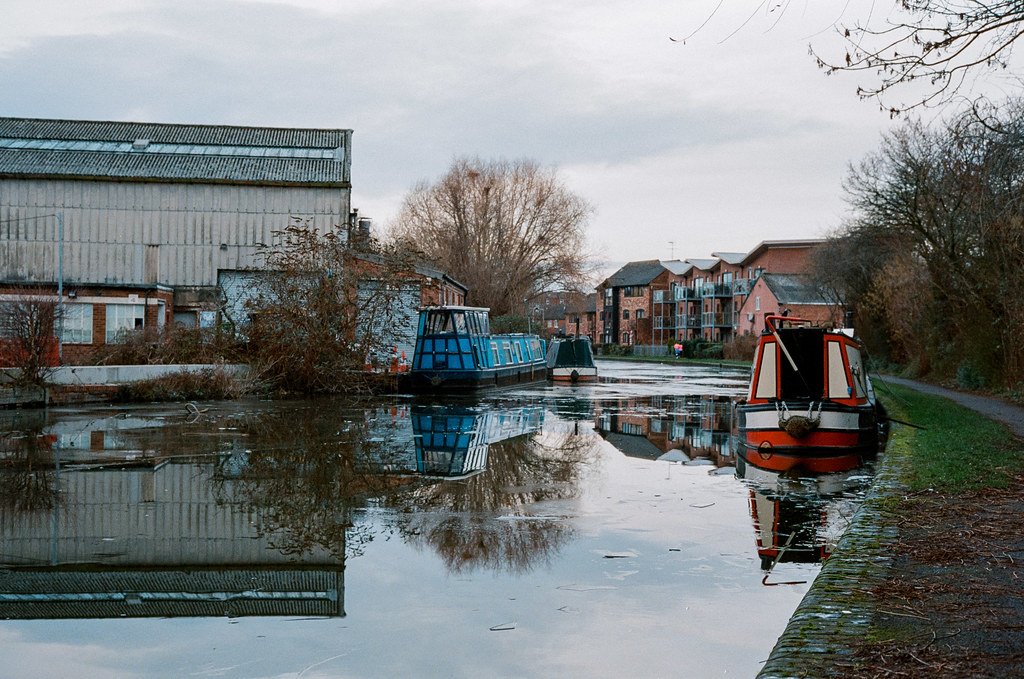
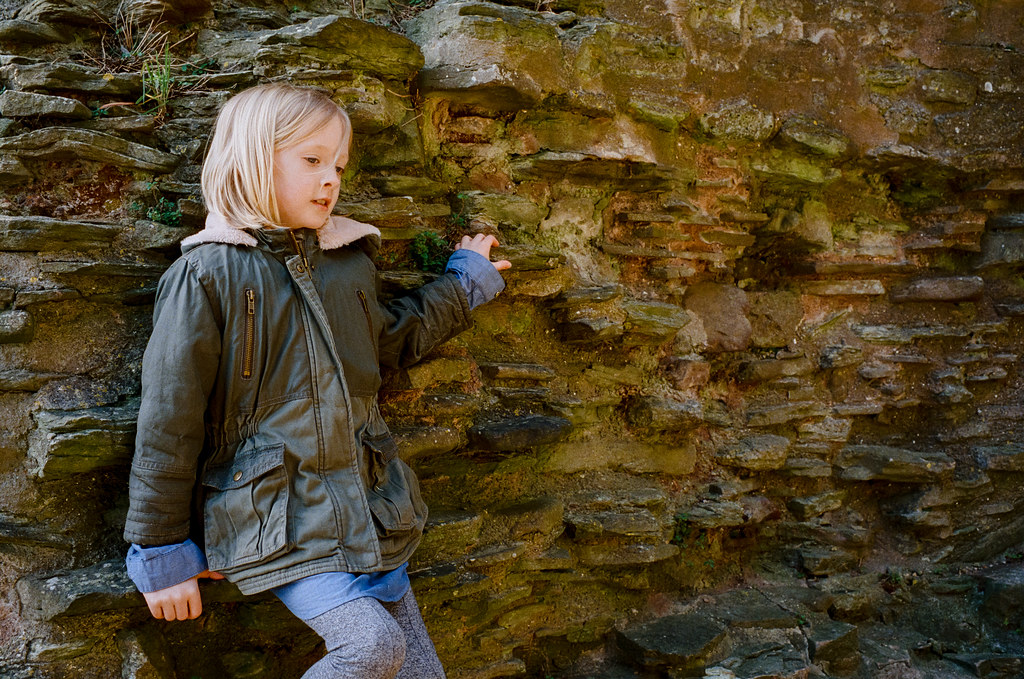
Final thoughts
At the beginning of this post I mentioned that I’ve recently committed to only shooting Kodak Ektachrome E100 and P3200 for at least 6 months to learn how to get the best out of those films. When I mentioned this on social media somewhere, someone commented that I shouldn’t rule out Portra 800. I can’t remember if I commented or not, but I do remember thinking how much I was going to miss this film. I also reflected on how I felt that I’d already learned how to shoot it, scan it and process it; and that it hadn’t taken that many rolls at all!
A part of this is no doubt down to the innate image quality of Portra 800. But another part of it must surly be just be how so perfectly it fits my tastes when shot within my established workflow. As I’ve mentioned a few times throughout this post, it’s also incredibly versatile. Combine this versatility and the aforementioned compatibility with my workflow – and my personal tastes – and what I’ve found in Kodak Portra 800 feels to me like it could well be my perfect colour negative film.
Of course, your mileage might vary for as many reasons as their are variables within the process of shooting it – not least your personal tastes – but if you like what you see in this post, I can highly recommend you give this film a go!
Words of thanks and recommendation
Finally, I just want to say thanks to Kodak Alaris for suppling about 50% the film I shot above. If you want to buy this film, I recommend Analogue Wonderland as a my chosen film supplier. They stock Portra 800 here, but also supply something like 200 other films making the website interesting to explore as well as purchase from.
Finally, you can find a load of my photos taken with this film here
Share this post:









Comments
Tom on Kodak Portra 800 Review – and some Thoughts on Shooting it Within my Workflow
Comment posted: 03/06/2019
It is such a joy to see how fine, true to colour and forgiving a film can be.
This one is going on my bucket list for sure.
Thanks Hamish
Tom
Comment posted: 03/06/2019
Aukje on Kodak Portra 800 Review – and some Thoughts on Shooting it Within my Workflow
Comment posted: 03/06/2019
Oh, I should not forget to mention: lovely photos indeed!
Comment posted: 03/06/2019
Comment posted: 03/06/2019
Comment posted: 03/06/2019
Comment posted: 03/06/2019
Will on Kodak Portra 800 Review – and some Thoughts on Shooting it Within my Workflow
Comment posted: 03/06/2019
Comment posted: 03/06/2019
Julian on Kodak Portra 800 Review – and some Thoughts on Shooting it Within my Workflow
Comment posted: 03/06/2019
Comment posted: 03/06/2019
Steve Ember on Kodak Portra 800 Review – and some Thoughts on Shooting it Within my Workflow
Comment posted: 04/06/2019
Whether in landscapes or portraits, I simply would not have taken these for having been shot on 800-speed film. And the pub and night street scene shots were also quite stunning.
My memories of shooting high-speed color film (800, 1000, 1600), whether negative or slide, were of not too wonderful colors and intrusive grain, so all I can say is much has improved since the mid- '80s ;-) Those memories had predisposed me to using either high-speed B/W or digital for low-light, hand-held shooting, so it was really enlightening to see your results in such shooting with the Portra-800.
And, of course, you have notched me further along in the direction of finding a Hexar RF in prime condition ;-)
For now, some Portra 800 on order, in both 35mm and 120!
Cheers,
Steve
Comment posted: 04/06/2019
Dain Neater on Kodak Portra 800 Review – and some Thoughts on Shooting it Within my Workflow
Comment posted: 04/06/2019
Comment posted: 04/06/2019
Paul Mulherin on Kodak Portra 800 Review – and some Thoughts on Shooting it Within my Workflow
Comment posted: 07/06/2019
I found Emulsive's article below incredibly helpful in helping me make up my mind:
https://emulsive.org/reviews/blind-film-review-01-fuji-natura-1600-vs-kodak-portra-800-vs-lomography-color-negative-800-35mm
Kate Johnson on Kodak Portra 800 Review – and some Thoughts on Shooting it Within my Workflow
Comment posted: 09/06/2019
Comment posted: 09/06/2019
Kosmonauts: Anna Lisa Wagner - Kosmo Foto on Kodak Portra 800 Review – and some Thoughts on Shooting it Within my Workflow
Comment posted: 05/01/2020
Contax 139 Quartz review - Kosmo Foto on Kodak Portra 800 Review – and some Thoughts on Shooting it Within my Workflow
Comment posted: 11/02/2020
Recommended reading : Down the Road on Kodak Portra 800 Review – and some Thoughts on Shooting it Within my Workflow
Comment posted: 05/03/2020
George on Kodak Portra 800 Review – and some Thoughts on Shooting it Within my Workflow
Comment posted: 03/07/2020
Jacek Zagaja on Kodak Portra 800 Review – and some Thoughts on Shooting it Within my Workflow
Comment posted: 03/07/2020
Zoltan on Kodak Portra 800 Review – and some Thoughts on Shooting it Within my Workflow
Comment posted: 20/03/2021
Comment posted: 20/03/2021
Dave on Kodak Portra 800 Review – and some Thoughts on Shooting it Within my Workflow
Comment posted: 19/06/2021
Correct me if I'm wrong (not unknown), but shooting an ISO 800 film at EI1200 is underexposing the film and not overexposing. Unless you are overdeveloping. I have no experience with color negative film.
Comment posted: 19/06/2021
David Hume on Kodak Portra 800 Review – and some Thoughts on Shooting it Within my Workflow
Comment posted: 19/06/2021
I have recently switched from P400 to P160 for my 135 landscapes for 1 reason .Grain. Not good or bad, but less, so if I want to print at 900mm on the short edge the grain is nice, whereas 400 is getting a bit chunky at that size. In 120 I’ve stuck with P400 so far. (You might have seen that “why shoot film?’” I wrote for Em last yr that was mostly about the relationship between grain and the image.) The other thing I’d say reading this is, OK - how did you end up getting on with E100? I only shot two or three rolls - have a couple in the fridge but I think it’s a waste of time. It seems like a hard film to learn, way more finicky that the old Fuji stuff I used to shoot was (but it say that without shooting heaps more would be bad) I have a idea; Ektar 100 is now the film for people want to shoot E6. It’s finicky but not too finicky - but you do need to think about exposure more than the others. It’s fine grain, high contrast. Now, I’m not a fan of shooting high contrast because in 2021 you want a good scan with detail then you put the contrast in yourself; but if you want to get stuff back from the lab that kids you you were shooting E6 but still looks nice, Ektar is the go. Can’t argue with that fine grain, either. Just thought I’d say hi , but it turned in to a “what I’m shooting and why.” (I’m on holidays) BTW started a project I’m pretty sure I’ll shoot dig - I’m shooting it on dig and 120P400 but I think I’m getting more what want off the dig. Never say never eh. This has almost turned into a piece, hey.
Comment posted: 19/06/2021
Tom on Kodak Portra 800 Review – and some Thoughts on Shooting it Within my Workflow
Comment posted: 15/09/2021
Hannah Gimblett on Kodak Portra 800 Review – and some Thoughts on Shooting it Within my Workflow
Comment posted: 15/12/2024
I'm particularly drawn to those low-light images.